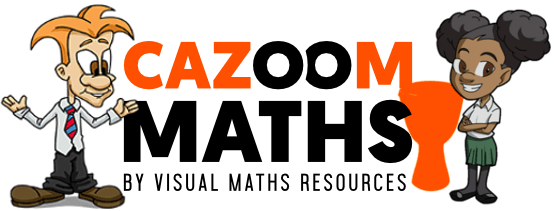Congruence and Similarity Worksheets in PDF
Math Worksheets / Congruence and Similarity Worksheets in PDF
An important part of geometry is learning congruence and similarity. Cazoom Maths has provided you with all the relevant resources and independent practice congruence and similarity worksheets with answers. We have supplied you with the correct congruence criteria for identifying triangles and various other shapes. Also provided are blank axes to support your student or child when studying. Cazoom Maths caters to all abilities therefore there are congruence and similarity worksheets for all levels.
PRINTABLE PDF CONGRUENCE AND SIMILARITY WORKSHEETS WITH ANSWERS
Many students can struggle with the concept of congruence and similarity. At Cazoom Math, we strive to help your child be able to understand each of these concepts. We provide answer keys for each of our Math congruence and similarity worksheets, so your child can make sure they are correctly solving the problems. With our congruence and similarity worksheets including pictures and extensions, we are sure to meet the level of need for all students.
Importance of Understanding Similarity
Understanding what similar shapes are is important as we move forward in observing the effects of the scale factors.
One of the qualities of similarity is that there is a scale factor that has enlarged or reduced the size of the original shape. There is an amazing mathematical relationship that occurs when you are comparing the perimeter, area and volume of similar shapes. Your child will have the joy of seeing and understanding this relationship from their understanding of similar figures.
What is the Difference Between Similarity and Congruence?
The difference between similarity and congruence:
Congruent shapes are exactly the same size and shape. Take, for example, congruent triangles. Two congruent triangles will have the exact same angles and sides of the exact same length. A good way to tell if physical shapes are congruent is to place them on top of each other. If they fit perfectly in the same space, they’re congruent. If one is larger or has slightly different angles, the two shapes are not congruent figures but similar.
Like congruent shapes, similar shapes have all the same angles and their corresponding sides are proportionally the same. Unlike congruence, similarity can denote two shapes of different sizes. Let’s take two triangles as an example. If the two triangles have all the same angles and their sides are the same in proportion to one another, but the two triangles are different sizes, they’re similar.
Key Differences
As astute learners may already have realized, the concepts of being congruent and similar are almost the same. The key difference is that while congruent shapes are the same size, similar shapes are different sizes. Two triangles that both have measurements of 10 inches, 5 inches and 12 inches along their sides and have the same angles will be congruent. If one of the two triangles had measurements of 20 inches, 10 inches and 24 inches, the two would be similar.
Congruent and Similar Symbols Look a Little Alike
Even the symbols denoting congruence and similarity look a little alike. The symbol for congruence in geometric equations resembles half of figure-eight flipped on its side or half of an infinity symbol. The symbol denoting congruence has this line on top, but also contains two straight lines beneath.
How Can Kids Study for a Congruence and Similarity Quiz?
The best way to help kids study for a congruence and similarity quiz is to have them complete worksheets from Cazoom Maths. Parents, tutors, and teachers will find that with the right tools, congruence and similarity math is fun for any children old enough to understand the basic concepts, and is an important part of the common core geometry curriculum.
Congruence and Similarity SAT Questions Focus on Four Concepts
Most congruence and similarity SAT questions focus on four related concepts. Students will need to be able to identify congruent triangles, compare similar triangles, identify similar polygons and similar figures, but they’ll also have to take their knowledge one step further.
Students will also need to understand the area and perimeter relations in similar polygons. With the right congruence and similarity worksheet grade eight students should have no problem learning this important skill.
USE CONGRUENCE AND SIMILARITY WORKSHEETS TO HELP YOUR CHILDREN
As mathematician Jacques Hadamard points out, “the definition of similar triangles consists of five conditions: three given by the equality of the angles, two by the proportionality of the sides.” (1) To meet conditions for mathematical congruence, two triangles must also meet an additional criterion: they must be the same size.
This seems like a straightforward explanation, but young students often need some help with understanding how it can be applied to practical geometric problems. The best way for parents, tutors and teachers to help cement this knowledge in the minds of students is to have them complete the congruence and similarity worksheets and check their answers carefully to make sure they’ve got the hang of it before the next big quiz. All our worksheets are aligned to the common core state standards and all worksheets include an answer key. These congruence and similarity worksheets are well suited to students from 4th grade to 8th grade. Browse the site to find learning resources that can help.
Resource
1. The Information Philosopher
http://www.informationphilosopher.com/solutions/scientists/hadamard/
